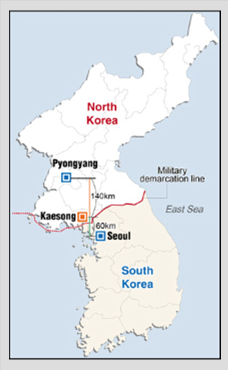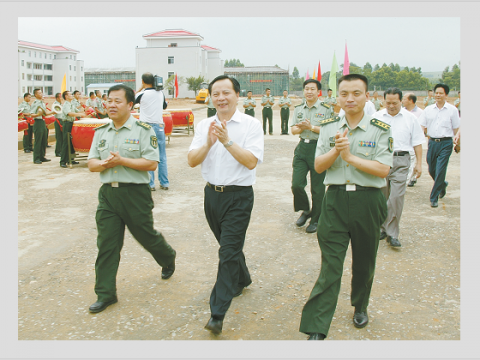
China Yingli’s Green Power a Winner at the World Cup
July 12, 2010
Improving Indonesia’s Counterterrorism Efforts
July 20, 2010In the aftermath of the sinking of the ROKS Cheonan, tensions are reigniting between North and South Korea. Amid the freezing of cross-parallel ties, one of the few remnants of past cooperation, the Kaesong Industrial Complex (KIC), remains a major power piece for both the North and South.
The complex began as a joint-economic development project in 2004. Under the arrangement, North Korean industrial labors produce a variety of manufactured items, such as textiles, automotive parts and semiconductors, under the auspices of South Korean corporations. Despite Pyongyang’s political blustering on closing the border, South Korean administrative staff continue to cross the DMZ for work each morning: a sign of the complex’s importance and endurance.
For North Korea, the KIC is one of the few breadwinners in a flailing economy hobbled by underdeveloped primary and secondary sectors. For a nation with an annual export capacity of approximately USD$1.8 billion, the KIC’s potential to generate over USD$9.5 billion from 2004-2013 will constitute a significant portion of North Korea’s fiscal future. Amidst a failing economy, aging infrastructure and an oppressive authoritarian regime, North Korea’s development rests with the liberalization of their economy; a feat symbolized by the Kaesong complex.
Considering the South Korean standpoint, the KIC is essentially a tool for outsourcing production without the usual drawbacks. For the South Korean companies, the common downsides of outsourcing – language and geographical distance – are not factors at the Kaesong complex. The workforce at the KIC speaks Korean, thus eliminating the language barrier, and the site is but an hour north of Seoul, just shy of the northern border of the DMZ, therefore facilitating physical access to means of production. Labor is also much less expensive in North Korea, where the average industrial worker only earns approximately USD$65 a month, as compared to the average USD$170 per month in China.
The shared value of the KIC for both the ROK and DPRK may shield the complex from the cross-parallel fallout. In the past, many have considered the complex a permanent venture; independent from the tribulations of inter-Korean relations. Proponents commonly point to the 2006 North Korean underground nuclear test; an act that incurred multiple sanctions, but not the closure of the complex. Although Kaesong’s future is far from assured, both states have a critical and symbolic stake in the complex that sets it apart from other political cards. The KIC is crucial litmus test for inter-Korean relations in days to come. Despite rapid deterioration in relations since the Cheonan incident, preservation of economic activity at the Kaesong complex signals that this incident does not necessarily sound the knell for the relations on the peninsula.




